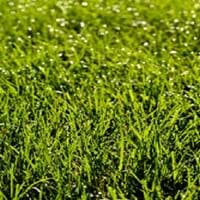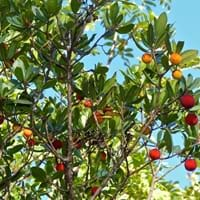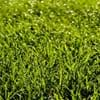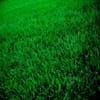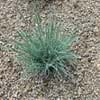Life Span
Perennial
Perennial
Origin
Southern Asia, India
Mediterranean
Types
Not Available
Not Available
Number of Varieties
Not Available
Habitat
Warmer regions
limestone outcrops, Rocky areas, Woodlands
USDA Hardiness Zone
6-11
8-9
Sunset Zone
H1, H2, 5, 6, 7, 8, 9, 10, 12, 13, 14, 15, 16, 17, 18, 19, 20, 21, 22, 23, 24
8, 9, 14, 15, 16, 17, 18, 19, 20, 21, 22, 23, 24
Habit
Mat-forming
Upright/Erect
Flower Color
Not Available
White, Light Pink
Flower Color Modifier
Bicolor
Bicolor
Fruit Color
Not Available
Yellow, Red
Leaf Color in Spring
Gray Green, Dark Green
Dark Green
Leaf Color in Summer
Light Green
Dark Green
Leaf Color in Fall
Gray Green, Dark Green
Dark Green
Leaf Color in Winter
Gray Green, Dark Green, Tan
Dark Green
Leaf Shape
Arrowhead
Orbiculate
Plant Season
Spring, Summer, Fall, Winter
Spring, Summer, Fall, Winter
Sunlight
Full Sun
Full Sun, Partial Sun
Type of Soil
Clay, Loam, Sand
Loam, Sand
The pH of Soil
Acidic, Neutral, Alkaline
Acidic, Neutral
Soil Drainage
Well drained
Well drained
Bloom Time
Indeterminate
Spring, Late Spring, Early Summer, Summer, Late Summer, Early Fall, Fall, Late Fall
Tolerances
Pollution, Salt, Soil Compaction
Drought
Where to Plant?
Container, Ground
Ground
How to Plant?
Seedlings
Seedlings
Plant Maintenance
Medium
Medium
Watering Requirements
Average Water Needs
Requires regular watering
In Summer
Lots of watering
Lots of watering
In Spring
Moderate
Moderate
In Winter
Average Water
Average Water
Soil pH
Acidic, Neutral, Alkaline
Acidic, Neutral
Soil Type
Clay, Loam, Sand
Loam, Sand
Soil Drainage Capacity
Well drained
Well drained
Sun Exposure
Full Sun
Full Sun, Partial Sun
Pruning
Not Available
Prune in early spring, Prune in late winter, Remove damaged leaves, Remove dead branches, Remove dead leaves
Fertilizers
Apply 3-1-2 or 4-1-2 ratio, Nitrogen
All-Purpose Liquid Fertilizer
Pests and Diseases
Red blotch
Red blotch
Plant Tolerance
Pollution, Salt, Soil Compaction
Drought
Flowers
Insignificant
Showy
Flower Petal Number
Single
Single
Foliage Texture
Fine
Medium
Foliage Sheen
Matte
Glossy
Attracts
Flying insects, Insects
Hummingbirds
Allergy
breathing problems, Eye irritation, Hives, Itchiness, Runny nose, sneezing, Throat itching, Whooping Cough
Hay fever, Oral Allergy, Skin irritation
Aesthetic Uses
Ground Cover, Landscape Designing
Beautification, Showy Purposes
Beauty Benefits
Skin irritation, Skin Problems
Not Available
Edible Uses
Insignificant
Yes
Environmental Uses
Air purification, Prevent Soil Erosion, soil stabilisation
Air purification
Medicinal Uses
Cures constipation, Cures foot fissures, Digestive disorders, Eliminate toxins, Fatigue, Halitosis, Improves Breast milk production, Increase red blood cells, Insomnia
Antioxidants
Part of Plant Used
Leaves, Stem
Fruits
Other Uses
Animal Feed, Cattle Fodder, Used as Ornamental plant
Traditional medicine, Used As Food, Used as Ornamental plant, Used for its medicinal properties
Used As Indoor Plant
Insignificant
Yes
Used As Outdoor Plant
Yes
Yes
Garden Design
Lawns and Turf
Shade Trees, Street Trees
Botanical Name
CYNODON dactylon
ARBUTUS 'Marina'
Common Name
Bermuda Grass
Marina Strawberry Tree, Strawberry Tree
In Hindi
बरमूडा घास
झरबेरी पेड़
In German
Bermuda Gras
Erdbeerbaum
In French
l'herbe des Bermudes
arbousier
In Spanish
Grama
Árbol de fresa
In Greek
Αγριάδα
φράουλα δέντρο
In Portuguese
grama Bermuda
medronheiro
In Polish
Trawa Bermuda
Strawberry Tree
In Latin
Bermuda Grass
arbutus
Phylum
Magnoliophyta
Magnoliophyta
Class
Liliopsida
Magnoliopsida
Genus
Cynodon Rich
Arbutus
Clade
Angiosperms, Commelinids
Angiosperms, Asterids, Eudicots
Tribe
Chlorideae
Not Available
Subfamily
Chloridoideae
Not Available
Number of Species
Not Available
Importance of Bermuda Grass and Strawberry Tree
Want to have the most appropriate plant for your garden? You might want to know the importance of Bermuda Grass and Strawberry Tree. Basically, these two plants vary in many aspects. Compare Bermuda Grass and Strawberry Tree as they differ in many characteristics such as their life, care, benefits, facts, etc. Every gardener must at least have the slightest clue about the plants he wants to plant in his garden. Compare their benefits, which differ in many ways like facts and uses. The medicinal use of Bermuda Grass is Cures constipation, Cures foot fissures, Digestive disorders, Eliminate toxins, Fatigue, Halitosis, Improves Breast milk production, Increase red blood cells and Insomnia whereas of Strawberry Tree is Antioxidants. Bermuda Grass has beauty benefits as follows: Skin irritation and Skin Problems while Strawberry Tree has beauty benefits as follows: Skin irritation and Skin Problems.
Compare Facts of Bermuda Grass vs Strawberry Tree
How to choose the best garden plant for your garden depending upon its facts? Here garden plant comparison will help you to solve this query. Compare the facts of Bermuda Grass vs Strawberry Tree and know which one to choose. As garden plants have benefits and other uses, allergy is also a major drawback of plants for some people. Allergic reactions of Bermuda Grass are breathing problems, Eye irritation, Hives, Itchiness, Runny nose, sneezing, Throat itching and Whooping Cough whereas of Strawberry Tree have Hay fever, Oral Allergy and Skin irritation respectively. Having a fruit bearing plant in your garden can be a plus point of your garden. Bermuda Grass has no showy fruits and Strawberry Tree has showy fruits. Also Bermuda Grass is not flowering and Strawberry Tree is not flowering . You can compare Bermuda Grass and Strawberry Tree facts and facts of other plants too.
